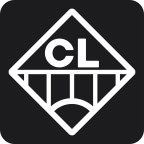Abstract
The surface strengthening of ball valves faces challenges such as high dilution rate and grain coarsening. However, high-speed laser cladding (HSLC) reduces dilution rate by reducing heat input through high scanning rate, and refines grain size through rapid cooling. Therefore, in this work, WC composite coating was prepared on the surface of stainless steel ball valve cores using HSLC assisted by induction heating. The phase composition, microstructure evolution, and crystallographic features were researched, while the wear and corrosion properties were evaluated. HSLC promoted equiaxed grain formation, significantly refined grains, modified grain orientation, and enhanced texture intensity. WC was added to further refine the microstructure and facilitate the precipitation of reinforcing phases such as W and Ni. In terms of wear properties, the combined effect of HSLC and WC reduces the friction coefficient and specific wear rate by 19.5% and 27.1%, respectively. The wear mechanism changes from adhesive wear of conventional laser cladding (CLC) coatings to abrasive wear of HSLC coatings. Regarding corrosion resistance, the corrosion potential was shifted positively by 217 mV, and the corrosion current density was reduced by 88.9%. A 59.5% reduction in pitting corrosion was achieved through the enhanced synergistic effects of grain refinement strengthening, passive film densification, and the barrier effect of hard phases by WC's addition.

Conclusions
The Ni-based coating consists of γ-(Ni, Fe) solid solution and precipitated reinforcing phases such as Cr₂₃C₆. The heterogeneous nucleation is further promoted, the microstructure is refined, and reinforcing phases like WC and Ni₃B are generated by the addition of WC. High-speed laser cladding (HSLC) significantly refines the microstructure, reducing the average grain size from 43.36 μm in conventional laser cladding (CLC) coatings to 15.70 μm, a 63.9% reduction. The coarse columnar grains and equiaxed grains are also transformed into fine equiaxed grains. The grains exhibit a preferred orientation along the [100] crystallographic direction.
The friction coefficient of HSLC coating is reduced to 0.339, and the specific wear rate decreased by 27.1% compared with the CLC coating. The wear mechanism shifts from adhesive wear to abrasive wear. Plastic deformation is inhibited by the hard phase, such as WC, W₂C, and high wear-resistant Ni₂B and Cr₂B, through dispersion strengthening. Wear is reduced by the synergistic effects of obtuse-angle micro-convex peaks and debris lubrication, resulting in shallow surface furrows and the elimination of peeling pits.
The corrosion potential of the HSLC coating shift positively by 217 mV, and the corrosion current density decreases by 88.9%. The CLC coating manifests as localized and general corrosion. The formation of a dense passive film is promoted by the HSLC coating through grain refinement to increase nucleation sites, resulting in only local corrosion. In the Ni-WC coating, phases such as WC and W₂C act as corrosion barriers, hindering the expansion of pitting, and the degree of pitting is reduced by approximately 59.5%. The improvement in corrosion resistance is attributed to the multi-mechanism involving grain refinement strengthening, densification of the passive film, and the barrier effect of hard phases.








